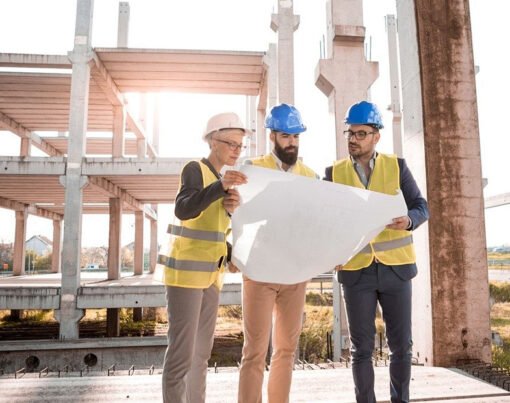In the construction industry, fostering a strong safety culture is essential for ensuring the well-being of workers and minimizing accidents. This article explores strategies for cultivating safety excellence in construction through effective safety protocols, comprehensive training, open communication, and creating a safety-first environment.
By implementing proactive measures, such as identifying potential hazards and addressing them before they become risks, construction companies can create an environment that prioritizes the safety of their employees.
Table of Contents
Implementing Effective Safety Protocols
The implementation of effective safety protocols in construction is crucial for fostering a strong safety culture. Continuous improvement plays a vital role in this process, as it enables organizations to evaluate and enhance their existing safety measures.
One essential aspect of implementing effective safety protocols is conducting regular risk assessments. These assessments involve identifying potential hazards and evaluating the associated risks, allowing organizations to develop strategies to mitigate them. By thoroughly assessing risks, construction companies can prioritize safety measures and allocate resources accordingly.
Additionally, continuous improvement ensures that safety protocols are regularly reviewed and updated to align with evolving industry standards and best practices. This proactive approach not only enhances worker safety but also promotes a culture of vigilance and accountability within the organization.
Ultimately, by implementing effective safety protocols through continuous improvement and rigorous risk assessment practices, construction companies can cultivate a strong safety culture that prioritizes the well-being of all stakeholders involved in their projects.
Providing Comprehensive Training
Providing comprehensive training in the construction industry is essential for promoting a safe work environment. Interactive workshops and hands-on simulations are effective methods to enhance safety knowledge and skills among construction workers. These training programs allow participants to actively engage in learning activities, increasing their understanding of potential hazards and the necessary precautions to mitigate them.
Interactive workshops provide an opportunity for workers to learn from experienced professionals through discussions, presentations, and practical exercises. This format encourages active participation, allowing individuals to ask questions, share experiences, and gain insights from their peers.
Additionally, hands-on simulations enable trainees to practice safety procedures in a controlled environment, providing them with valuable experience before encountering real-life situations on construction sites.
By incorporating these interactive workshops and hands-on simulations into training programs, construction companies can ensure that workers receive comprehensive instruction on safety protocols. This proactive approach helps cultivate a strong safety culture in construction within the industry by equipping individuals with the knowledge and skills needed to prevent accidents and promote a safer work environment.
Encouraging Open Communication
Encouraging open communication among construction workers is crucial for promoting a collaborative and informed approach to safety practices. By fostering an environment where employees feel comfortable expressing their concerns, ideas, and experiences related to safety, trust can be built within the workforce. This trust-building process enables workers to actively participate in identifying potential hazards and offering suggestions for improvement.
Moreover, open communication empowers employees by giving them a voice in shaping safety protocols and procedures. When workers feel valued and heard, they are more likely to take ownership of safety initiatives and adhere to established guidelines.
Furthermore, effective communication channels allow for the dissemination of important information regarding safety updates or changes in procedures, ensuring that everyone remains informed and vigilant.
Overall, encouraging open communication cultivates a strong safety culture where all individuals actively contribute towards maintaining a safe working environment in the construction industry.
Creating a Safety-First Environment
Creating an environment that prioritizes safety is essential for fostering a culture of accountability and vigilance within the construction industry. Promoting accountability is crucial in ensuring that all individuals involved in construction projects take responsibility for their actions and adhere to safety protocols.
By establishing clear safety guidelines, organizations can provide a framework for safe practices and expectations. These guidelines should outline specific procedures, equipment requirements, and training protocols necessary to maintain a safe work environment.
Regular communication and training sessions can further reinforce these guidelines and help employees understand the importance of adhering to them. Additionally, implementing regular safety inspections and audits can identify potential hazards and areas for improvement, allowing organizations to proactively address any issues before they lead to accidents or injuries.
Overall, creating a safety-first environment requires proactive measures aimed at promoting accountability and enforcing safety guidelines throughout the construction industry.
Minimizing Accidents through Proactive Measures
Minimizing accidents in the construction industry requires proactive measures that prioritize adherence to safety guidelines and regular inspections.
To promote hazard awareness, it is essential to provide comprehensive training programs for all workers, highlighting potential risks and precautionary measures. By educating employees about potential hazards specific to their tasks and work environment, they can better identify and avoid unsafe conditions.
Additionally, enhancing equipment inspections plays a crucial role in accident prevention. Regularly assessing machinery for wear and tear, faulty components, or inadequate maintenance can help identify potential issues before they pose a threat to worker safety. Implementing thorough inspection protocols ensures that any defects or malfunctions are promptly addressed, preventing accidents and injuries.
Adopting these proactive measures fosters a culture of safety excellence within the construction industry by prioritizing hazard awareness and equipment maintenance.










